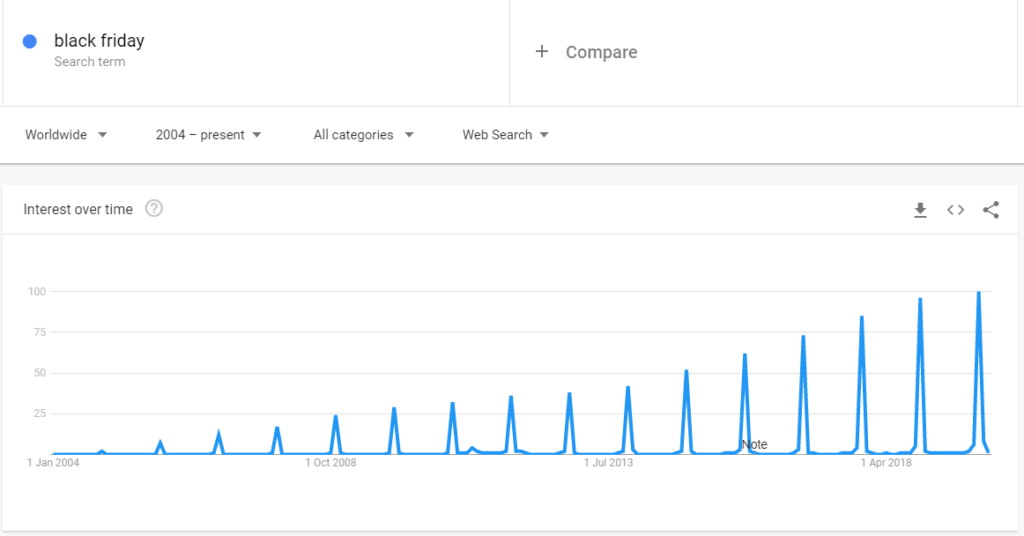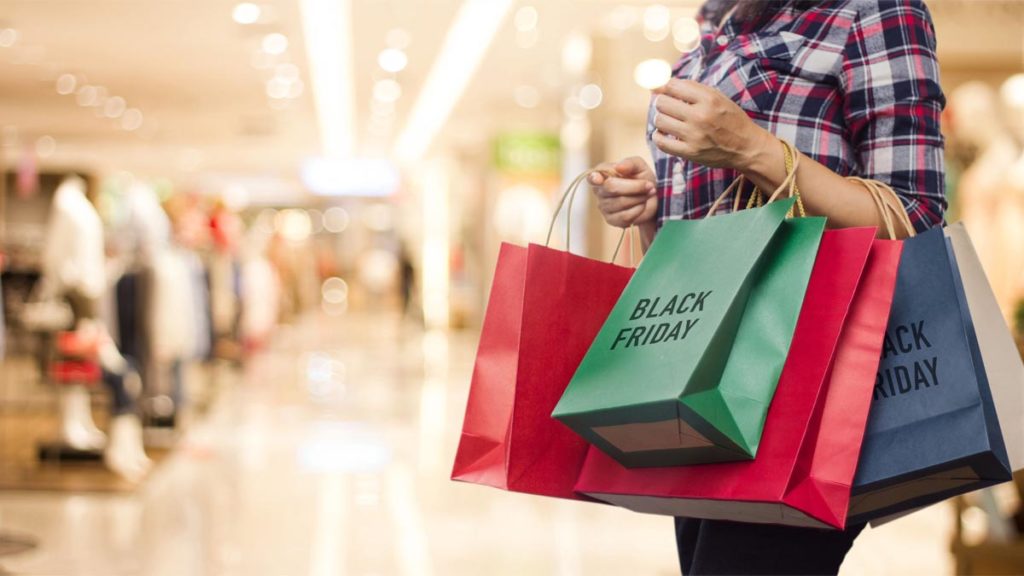The interest raised online by Black Friday and the huge wave of offers it entails has not ceased to grow around the world. According to the Google Trends index, which rates from 0 to 100 the interest Google users show regarding a particular topic, anticipation for Black Friday has reached a maximum in its history. Helped by the dynamic nature of e-commerce businesses, the Black Friday campaign has changed the rules of the game in Christmas shopping, a key point for the retail sector.
How does the array of offers during Cyber Week affect shopping habits? We have broken down the three main trends that could be observed throughout the last few years.

Online Shopping Is Still Gaining Ground to Traditional Models during Cyber Week
According to global data from the Holiday Shopping report by Salesforce, because of Black Friday, shoppers have moved forward their Christmas shopping; in 2018, half of the consumers had already finished buying gifts during Cyber Week. The Black Friday Global report reveals that last year, the mean expenditure in the United Kingdom was 351 euros, with an average of four items per person. The categories that stood out the most were clothing, cosmetics and perfumes, jewellery, shoes and electronics.
However, how is this consumption distributed among retail? As a digital phenomenon, the trend indicates sales during Black Week are zeroing into the online channel, but the final decision hinges on how convenient the deals are, and free delivery is the one that attracts the most attention. As a result, 80% of the Black Friday offers include this advantage, as we can see in the Salesforce report. In the same way, during that week, package deliveries increase circa 70%, moreover, the demand for lockers for product pick-up has not stopped growing, according to a calculation made by the locker company Luxer One.
Consumers Prefer an Omnichannel Shopping Experience in Black Friday
When it comes to sales at a larger scale, the lines between the physical and the digital get blurred. For modern customers, the main motivation is the search for a comfortable transaction. Therefore, the network of physical shops plays an essential role to achieve a satisfactory omnichannel sales experience. In fact, a survey of the National Retail Federation about consumer trends in the United States shows that half of the customers used both channels for their shopping in 2018.
A crucial matter when it comes to making the most of Black Friday is the option Click & Collect (buy online, pick up in the shop), especially as an alternative to paying for the delivery. Similarly, managing returns in the shop is another of the features favoured more often, taking into account that in 2018, according to the National Retail Federation, 68% of users planned returning items right after receiving gifts.

When It Comes to Inspiration, the Online Channel Is Clearly Dominant
During Cyber Week, most of the shopping is not previously planned. According to the Salesforce report mentioned earlier, users look for inspiration mainly in online channels. The ROPO effect (research online, purchase offline) might come into play at the end, and customers will decide to buy in physical shops; this is another common sample of omnichannel sales in the retail sector.
Social networks, Google searches and e-commerce websites themselves are the main channels to look for information and inspiration. In 2018, sales made with mobile phones overtook those made from the desktop for the first time (48% against 44%). This is the reason why it is essential to lay the groundwork for Cyber Week:
- It is advisable to plan the paid search strategy in detail: campaigns must have a personalised message that attracts the users’ attention when they are searching for inspiration.
‘it is essential to control bids so as not to lose visibility against the competition and to achieve conversion improvements by using remarketing lists.
Eduardo Agudo, Associate Partner at Labelium
- In social media, adapt push campaigns to show the most relevant messages at each moment: they do not only work as an effective loudspeaker from which to create expectation, but also excellent to make offers visible and the subsequent final conversion.
- Your SEO and UX efforts throughout the year should lead up to this moment: e-commerce functions as a display window for retail. Because of this, the web cannot simply be optimised with the most relevant keywords, but it should also make the product search easier, by using visible landing pages and a carefully curated categorisation. Since now is the time of Mobile First Index, browsing the mobile phone version of the website should be faster and more efficient than ever.
Black Friday has become a global event with an undeniable impact on retail sales. During this key week, each digital channel should support and promote communication and marketing efforts.







